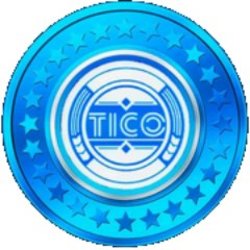The path to mainstream Web3 adoption is riddled with complexity, obstacles, conundrums, regulations, “moments” and other similar jargon. That’s one perspective. Here’s another: Actual adoption and transformation will be invisible — the integration of Web2 users into Web3, en masse, will be seamless, with the “blockchain” nowhere to be seen. Some technologies simply need to disappear to succeed.
How could blockchain’s success happen without us knowing? In the same way, other technology becomes quietly indispensable by putting complexity under the hood.
Complexity as a UX barrier
Like it or not, Web3 is currently hindered by numerous technical complexities. These hurdles make it hard for non-technical people to get involved, but not impossible. As a result, the current active community is composed mainly of engaged investors, gamers and developers. That’s hardly the mass adoption that is being sought after.
Managing wallet keys and seed phrases, understanding gas fees, and interacting with a slew of ultra-modern platform interfaces, wallet connections and digital signatures can be too much for some. Imagine if your grandmother wanted to start yield farming — could she figure it out without you doing it for her? Probably not. If not, why not? Technical literacy is not a given. This problem must be abstracted away to benefit all potential users.
Invisible infrastructure wins
TCP/IP and cloud computing power the digital world, yet only a few end users can tell you what they are or how they work. These technologies have become invisible. Blockchain technology will mimic them one day.
People don’t have to think about or understand the complex internet protocols and infrastructure that support most digital environments, experiences and interactions, so future Web3 users won’t have to make conscious or intentional engagements with the blockchain.
Platforms like Stripe demonstrate the immense potential of being an invisible technology provider. They’ve achieved it by taking Visa’s business model and simplifying it with fixed 3% fees and by integrating world-class application programming interfaces under the hood. The outcome has been extraordinary, turning Stripe into one of the most successful business-to-business-to-consumer (B2B2C) fintech firms in history, reaching over $1 trillion in volume — around 1% of global gross domestic product.
Stripe’s achievements might not have been possible before Web3, and that shows the company’s youth, particularly in relation to platforms like Meta, Google and Amazon. Each of these platforms, too, built extraordinary user numbers, revenue figures and profits thanks to embedding their complexity out of sight and out of the minds of their users.
Practical approach to invisible integration
Technical complexity must first be abstracted away from end-users, sweeping gas fees and wallet management under the rug (or at least away from the user interfaces). It means designing and delivering ultra-intuitive and familiar user experiences that pass the “grandmother test.” That can be done by prioritizing the user experience (UX) over technical prowess or demonstration.
Stripe has taken a similar route, as explored, quietly solving real-world problems by focusing on practical applications (B2B2C payments) that put user value over technological innovation. They’ve won by keeping fees simple and hiding their operations’ more complex aspects out of view.
What the skeptics say
Some outspoken critics feel that the seamless integration of Web3 tools (decentralized) into Web2 platforms (centralized) compromises or contradicts blockchain’s core principles and ethos. This belief is held especially firmly in the Ethereum community, where reducing intermediaries is key to the network’s decentralization mission. They must remember that true decentralization is not about creating isolated spaces or a self-contained digital economy; it’s about reimagining the future of technology, finance and society to empower the individual.
New Web3 technologies will not eliminate all intermediaries, and while this is not desirable for all, it will still enforce a role and business model change.
Why invisibility matters
Blockchain accessibility and abstracting complexity for business purposes do not dilute its revolutionary potential, as some critics would have you believe, but they do expand it. Consumer needs will always win — if problems are solved efficiently and invisibly — without forcing habit changes. Intermediaries don’t need to be eliminated if their roles can be reshaped to support the mission without impacting blockchain’s trustless and immutable nature.
End-users want minimal learning curves, a seamless experience and efficiency — all achieved by making blockchain interactions “invisible.” Low Web3 adoption will be solved, and Web2 will be overtaken in a few years if this invisibility is achieved.
The next step
Web3 isn’t just a technological movement — it’s a cultural shift. As it becomes invisible, integrating with the most popular Web2 experiences and platforms will finally achieve what its earliest pioneers could only have dreamt of: genuine, widespread transformative adoption. This revolution might not make the headlines, but it will happen slowly and suddenly, all at once.
Opinion by: Mark Smargon, co-founder and CEO of Fuse.io.








